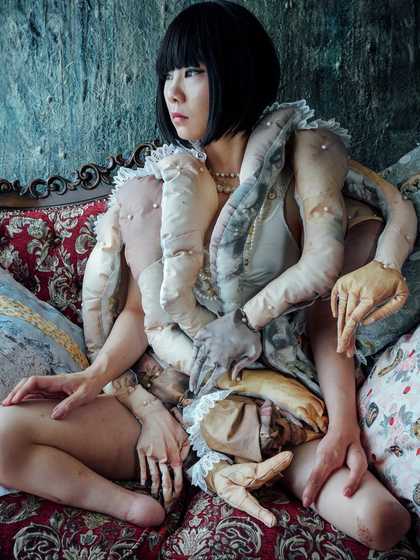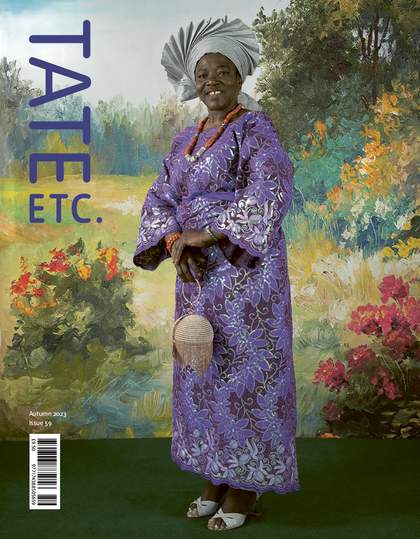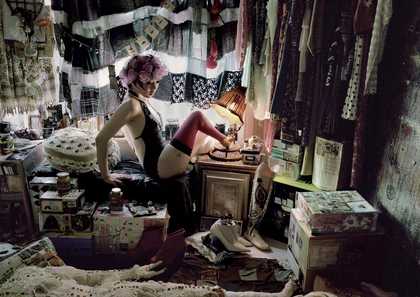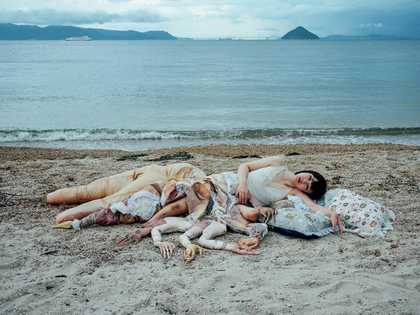
Mari Katayama
bystander #23 (2016, printed 2020)
Tate
ETC. What role does beauty play in your art?
MK I am interested in people’s common obsession with artificially created beauty, which is something that changes with the times. Yet, there is a type of beauty that exists regardless of time and place. I want to make things which are universally beautiful and accessible to everyone.
ETC. When did you first introduce your characteristic sewn objects into your photos?
MK I’ve been hand sewing soft sculptural objects for about 20 years. I started out by tracing my body, recreating the body parts that I had lost. Patchworking fabrics, stitch by stitch, is physically demanding work. But to me, this was also a process of confirming the shape and role of the self in society, as if looking in a mirror. When I started taking photos of these objects, I used my body as if it were a mannequin.
ETC. Has making this work changed your perception of yourself?
MK I actually don’t believe the person in the self-portrait is ‘myself’. I cannot say that I ‘own’ my body and my activities, since these are made possible by various support mechanisms, such as prosthetists who know my body better than I do, the welfare system, my family and friends. Through my work, I ask: ‘How much of this is you, and how much is not you?’
ETC. How did bystander 2016 come about?
MK I stayed on Naoshima island and made objects from photographs of the hands of female kuroko (puppeteers of bunraku dolls, who wear black on stage), whose hands become dolls’ legs and spines. I felt that their role was like that of a bystander, similar to the way we live as bystanders to history. It was the first time I featured other people’s bodies in my work, and it was an experience of the difficulty and power of ‘living together’ with others. As communities become more fragmented, developing networks like these is all the more vital.
bystander #23 was purchased with funds provided by the Photography Acquisitions Committee in 2022.
Works by Mari Katayama are on display at Tate Modern.
Mari Katayama lives in Gunma Prefecture, Japan. She talked to Genevieve Barton, Assistant Curator, Tate.



